
Anyone who attempted to re-make a beloved horror classic like Dario Argento’s 1977 original was bound to catch shit for taking it on (while I like the original, it never left a big impression on me; I much prefer the second film in his Three Mothers trilogy, Inferno) but Luca Guadagnino just said fuck it and re-worked the entire concept, keeping the barest of the original’s structure (a new girl moves to Berlin to join a dance company secretly run by witches) and pretty much telling a completely different story from there. To be honest, there’s not even much use in comparing the two, as the setup of the original Suspiria serves as inspiration for Guadagnino’s film, but nothing more.

If you can get past making comparisons or if you aren’t overly committed to the original, I think Suspiria is a breathtaking, enthralling film. Not everything works (dividing the movie into “acts” as if we are watching a theatre or dance performance is overly pretentious, and weaving in the sub-plot of Dr. Klemperer and his Holocaust-based trauma, as well as the 1977 hijacking of Lufthansa Flight 181 during the German Spring, weigh the film down unnecessarily) and many positive reviews mention how the movie baffles on first viewing but comes together after a second – which was my experience also. I was left feeling disappointed after the first watch, primarily by the third act, which came off as too much of a shift tonally, as well as awkward and unsatisfying. But there was so much going on in the first two acts that I loved that I was willing to give it a second try, where, sure enough, it all come together better – even though I still felt (and still feel) like the script bit off more than it needed to chew.
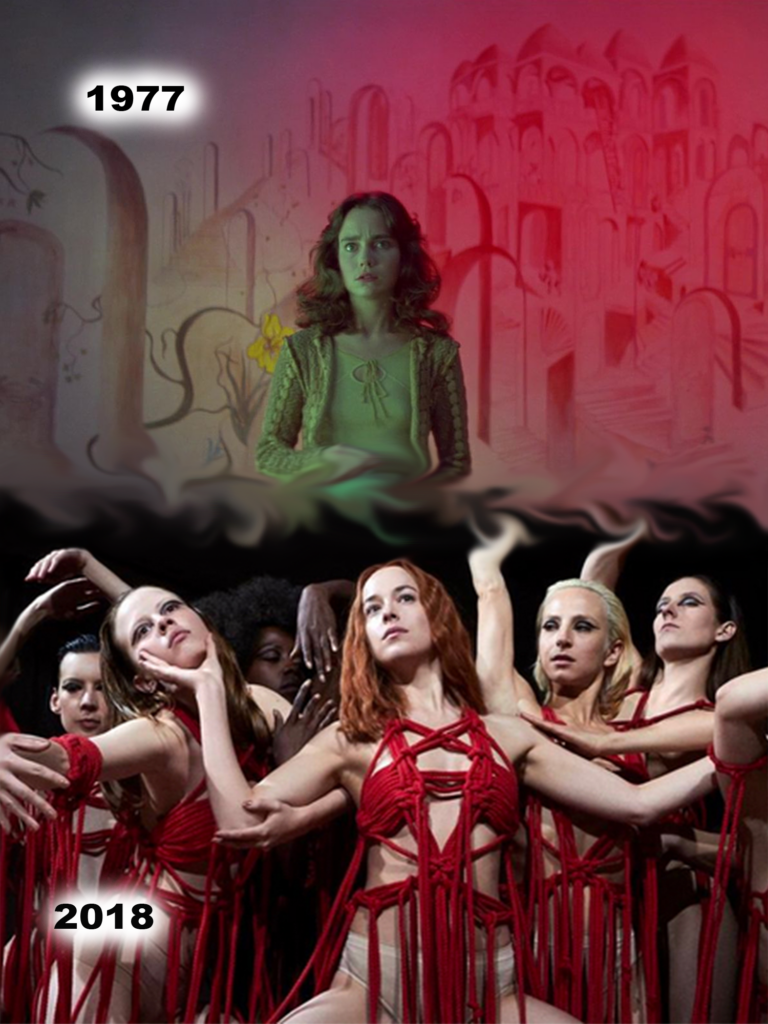
One of my main reasons for coming to love this film is how integral the element of dance is to the story. In the original, the ballet studio is a backdrop, a way to collect the witches together and get Susie, the protagonist, into the mix. In fact, that Susie is taken ill right away when she arrives, without performing much more than a few pirouettes before she gets hurried away to her room to recover. Not so 2018 Suspiria, where Susie Bannion (played by Dakota Johnson) performs an impressive audition and executes a stunning, impromptu lead performance that also serves to witchily punish a wayward company member in the movie’s most grisly, yet strangely gorgeous, body-horror scene before she needs to be carted away to recuperate. The movie has several extended dance sequences, including a full performance of the piece the company has been working on throughout the duration of the film, and a macabre performance during the gory, over-the-top climactic ritual. This is modern dance, powerful, primal, and purely female, as opposed to the traditional ballet of the original.

Femininity is central to this Suspiria. The dance company is entirely female, as is the staff who oversee the performances and living arrangements, which are dormitory-style. The only man with any presence in the story is Dr. Klemperer, who gets involved in the witchy dealings when one of his clients, a dancer for the company who has become convinced it’s run by witches who are trying to take over her body, disappears. But even Klemperer has a feminine twist up his tweedy sleeve – it’s actress Tilda Swinton in heavy disguise. Swinton is, as usual, rock-solid in this film in every form she takes. She plays Madame Blanc, the lead choreographer, artistic genius, and primary contact with the young dancers, as well Klemperer and, in the insane ritual scene, the diseased, grotesque Mother Markus, the company’s namesake. The first time I watched this, I knew something odd was up with Dr. Klemperer – he had the weirdest voice I’d ever heard – so I wasn’t totally surprised to find out Tilda played him. In fact, knowing it’s Tilda in male drag made me appreciate the character much more, because the director said he made that choice to keep the energy of the set entirely female, even with a male character in the mix.
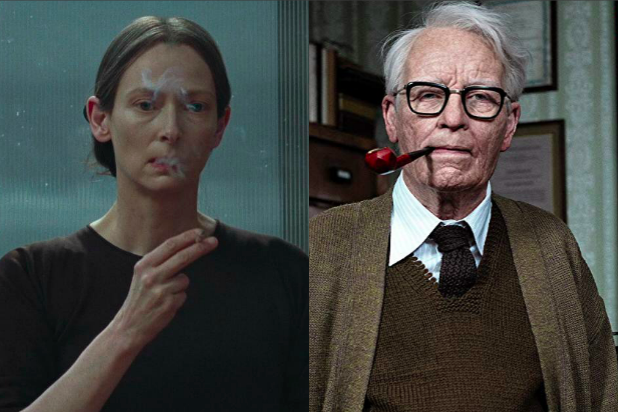
But just because the environment is entirely female doesn’t mean it’s free from struggles for power and control. While the dancers who live there feel like family, and Susie is welcomed with surprisingly open arms by all of the girls as well as the staff, there’s something off about this place from the start. There’s the sudden overnight exit of Patricia, Dr. Klemperer’s patient, whose room Susie will be taking; the nightmares Susie has each night, as well as the admission from the other dancers that they too had terrible dreams when first joining the company; and there’s the outburst from Patricia’s friend, Olga, who basically calls the dance instructors witches to their faces.

There’s also the odd bond Susie has with Madame Blanc, who is not the founder of the dance studio but appears to be its heart. While it seems clear Blanc sees herself in Susie – who manages to gain acceptance to the company when they are not holding auditions, and who manages to take over Patricia’s lead role in the piece the company is rehearsing when no other girl is able to do it – she also appears pained by Susie’s rapid ascendence to principal dancer in a way that suggests something darker is afoot here.
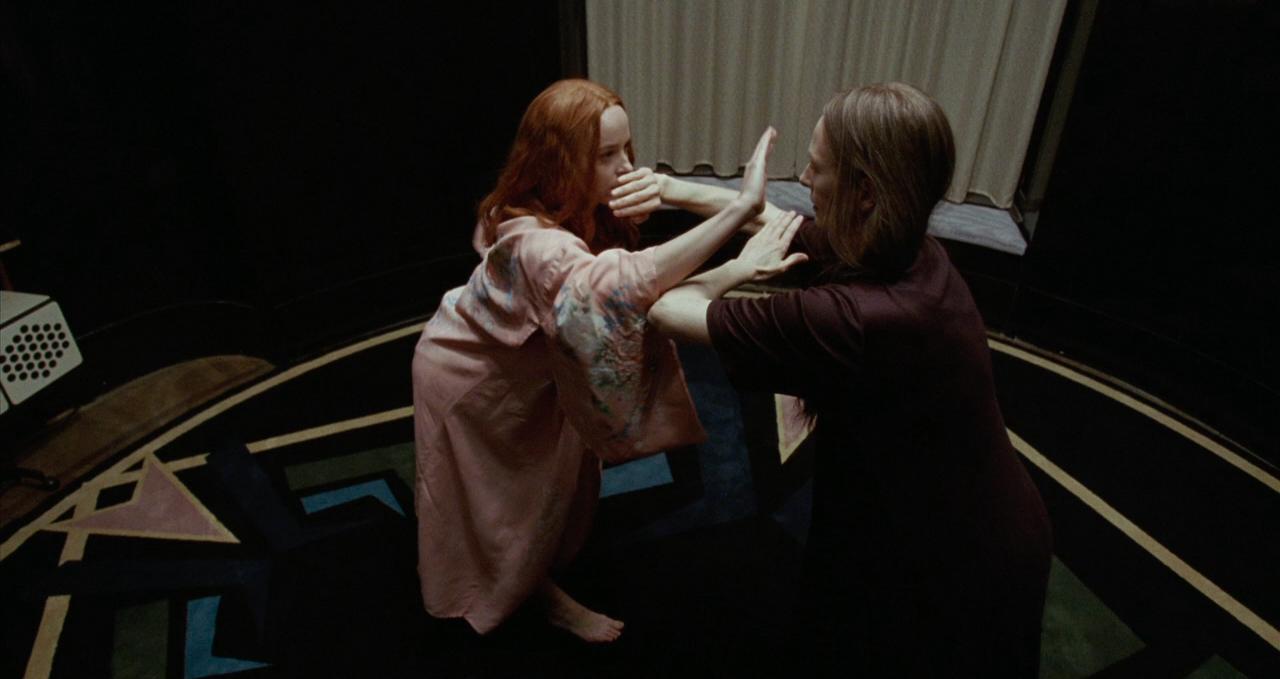
What that something is seems evident from the start – before she disappeared, Patricia confided to Dr. Klemperer that the dance company had something more nefarious going on underneath the surface, that she believed Mother Markos was trying to get inside of her. Patricia’s name comes up regularly among the women who run the company, with intimations that some ritual they included her in went awry, and it’s not a stretch to conclude that the ritual they discuss is, in fact, one that will project Mother Markos – the founder of the dance company – into another body, just as Patricia feared. It’s also not a stretch to conclude that Susie’s incredible instinct as a dancer as well as her innate ability to conjure up some seriously dark magic – although the extent to which Susie is aware of how the movements of her body are used by the coven to exact harsh punishment on Patricia’s friend Olga remains unclear- makes her the ideal candidate.
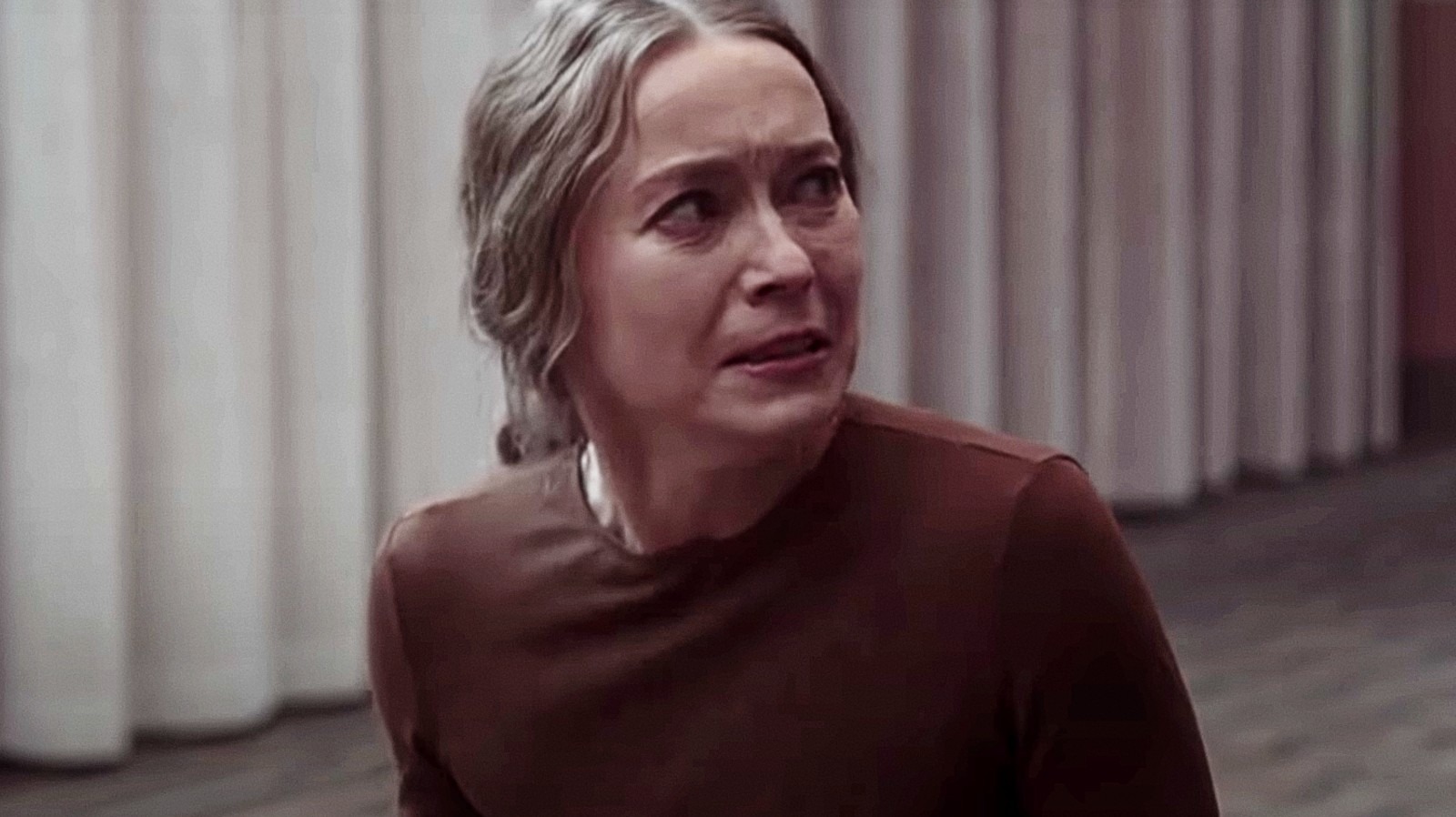
One of the elements that is interesting to watch during the film’s long runtime is the role-switching Madame Blanc and Susie engage in throughout. At times, Susie is, as one would expect, the ingenue who needs the guidance of Blanc’s fierce creativity and drive; while at others, Blanc wavers in her resolve to do as has been dictated by the coven, based on her affection for Susie; at such times Susie is the one whose confidence and surety reassure the Madame that everything is going to be all right. Of course, the audience knows, or thinks it knows, that Susie keeps saying this out of ignorance; surely she has no idea what the company really has in store for her, and is merely comforting Madame Blanc over what she thinks is the choreographer’s uncertainty about her ability to meet the demands of a principal dancer in what is undeniably a difficult piece.
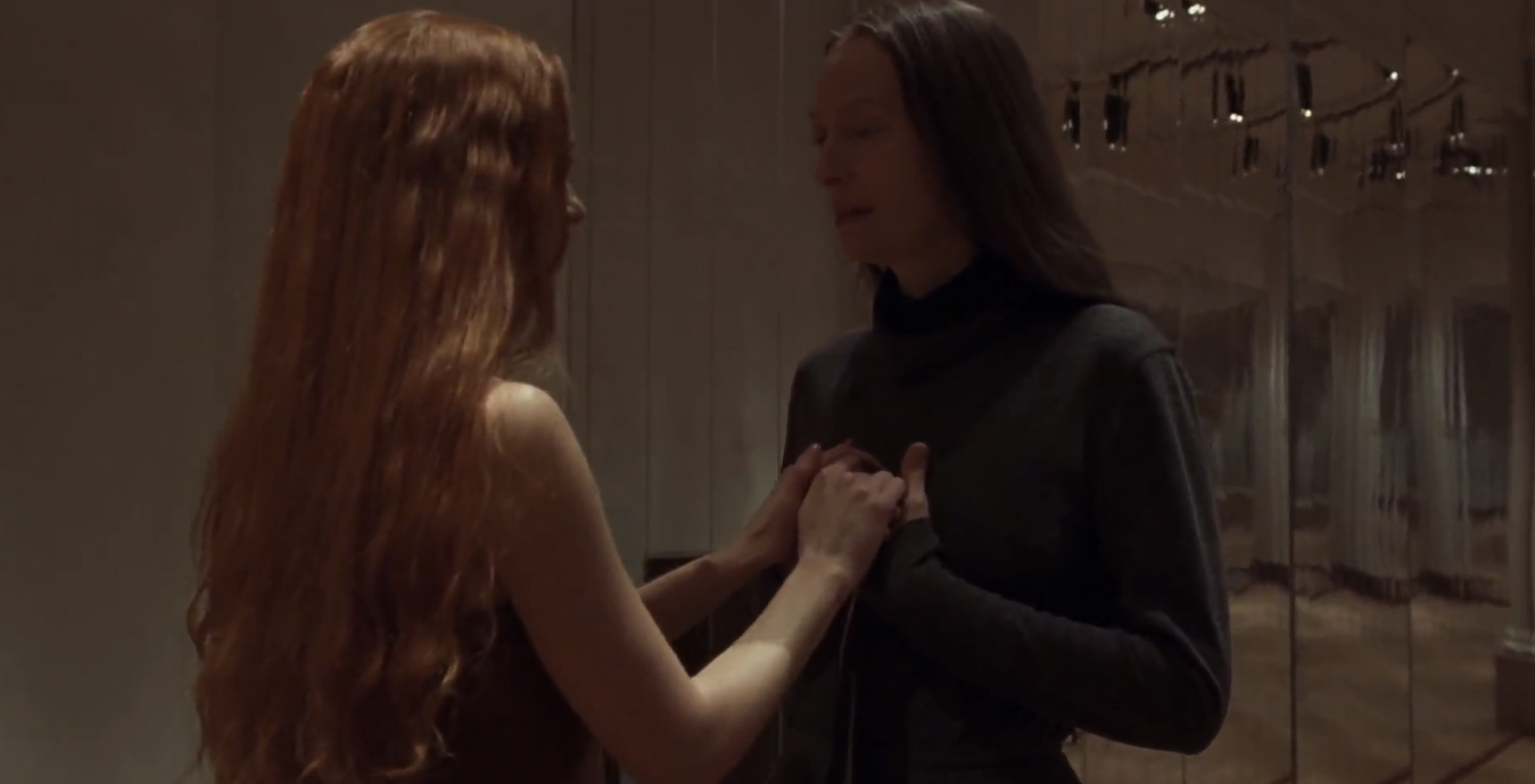
And yet…there’s something unnerving about Susie’s calm, quietly assured manner throughout her time with the dance company. Through flashbacks and a conversation with Blanc, we learn that she ran away from her Mennonite family in Ohio, where she was homeschooled by a mother who despised her and considered her to be something more than a disobedient child; on her deathbed (she has slowly been dying of cancer throughout the course of the film) she refers to Susie as “my sin I smeared on the world.” We get no further information about that, but the mother motif connects Susie’s mother to Mother Markos of the dance company. While Markos refers to herself as Mother Suspiriorum (the Mother of Sighs), both Markos and Susie’s mother can be heard at different moments breathing heavily, as if sighing in pain and anguish – Markos’s pain at having to live in an ancient, diseased body, and Susie’s mother’s pain enduring the end of her relatively young life in a body riddled by cancer. There’s more sighing afoot throughout the film – when the dance company performs, the girls all breathe and sigh heavily, almost in unison, and Susie’s breathing is dominant in her audition, which seems to draw Madame Blanc from the rehearsal room into the tiny studio where Susie is performing.

There are other sounds that recur as audible motifs throughout the film: the haunting sound of the music composition rewinding in the studio echoes the sound of Dr. Klemperer’s recordings of Patricia’s therapy sessions being rewound. The dancers, as well as the staff, often burst into laughter at the oddest moments, and for no apparent reason – when Olga calls the women who run the company witches, several of the women burst out laughing; gaggles of girls whisper and giggle together in corners, and there are several times throughout the film where one character or another simply bursts into laughter as they leave a room, again, for no apparent reason we can ascertain. I’ve given this element of the film a lot of thought over the years, and I think I finally came up with an explanation for it that I’m satisfied with: I think this constant giggling and whispering on the part of the young girls and the older women represents the mystical, unique bond they share as a functioning unit. Most of the time, this laughter comes off as if the amused are sharing a secret, one we are never privy to but that seems to be held by everyone in the company. Susie, however, seems removed from this gossipy giggling – not engaging with it, but not bothered by it either. From the moment she arrives at the company, Susie manages to both fit in and stay distant at the same time.

Much like Madame Blanc, who has challenged Mother Markos for control of the company, and is therefore at a remove from the other staff. Early on in the movie, we witness a vote being taken, although it is done entirely through telepathy, with the women moving about the building’s kitchen, preparing breakfast for their morning meal while their voices call out for either Markos or Blanc. It’s Markos who wins, which means another dancer’s body must be prepared for her to use as her own; it’s unclear how long she’s been existing in her current one, but when she appears in the movie’s climactic scene it’s clear there’s nothing left of it but tumors and rot. Madame Blanc rightly points out that if Markos really was who she claims to be – one of the Three Mothers, ancient witches who rule different parts of the globe – there would be no need to keep channeling her spirit into different dancers, but once the tally is taken, Blanc is forced to go along. As much as she dislikes the idea, she must choose another dancer for Mother Markos to use.

It’s this tension that propels the film forward as the company rehearses for their final performance of Blanc’s celebrated piece “Volk” (“folk”). We know that by volunteering herself to dance Patricia’s lead, Susie has unwittingly offered herself up as some sort of sacrifice for Mother Markos; we also know that Madame Blanc is increasingly unhappy about this but is either unable or unwilling to stop it from happening. In one scene near the climax of the film, Blanc visits Susie in her room at night, communicating with her telepathically that she wants to explain to Susie what she’s gotten herself into, but feels that she can’t – we can assume that is because of her loyalty to the coven, but it’s also clear that Blanc is out of her element with the whole situation; she knows what’s happening feels wrong, but the idea that it’s simply because she cares for Susie doesn’t quite explain her unease. It’s another situation where Susie takes on the mothering role, reassuring Blanc that everything is fine and there’s no need to worry. But does Susie really know what the company has in store for her? She never says anything to indicate that she does; she just exudes this confident certainty that reveals her willingness to accept whatever fate awaits her. She is truly Not Bothered.

There are other characters here who factor greatly into the overall story; Mia Goth plays Sarah, the dancer who befriends Susie the day she arrives at the company. Sarah was also good friends with Patricia, and her worry over her disappearance propels her into the heart of the darkness that lies beneath the dance troupe’s surface. She tries to track Patricia down at the same time Dr. Klemperer, Patricia’s therapist, is also trying to find her; once the two meet and compare notes Patricia’s disappearance becomes more ominous. Sarah takes to sneaking around the building at night, looking for clues, which leads her to the home of the coven hidden underground, beneath the studio. She has to sneak away quickly in order to remain undetected, but Sarah sees enough to convince herself that Olga wasn’t playing when she called Madame Blanc and the others witches.

So Sarah becomes the second person to be concerned about Susie’s position in the company. She begins to connect Patricia’s experiences as the principal dancer to Susie’s – the way Blanc seemed to groom her for something beyond a dance performance, the way Patricia’s dancing seemed to improve magically and exponentially once Blanc’s attention shone down on her, and of course, the way Patricia, in the end, disappeared without a trace. She fears the same for Susie, but when approached Susie replies with the same sense of calm and confidence that she shows Madame Blanc. She’s not worried about anything, and she knows it’s all going to be fine. Sarah disagrees.
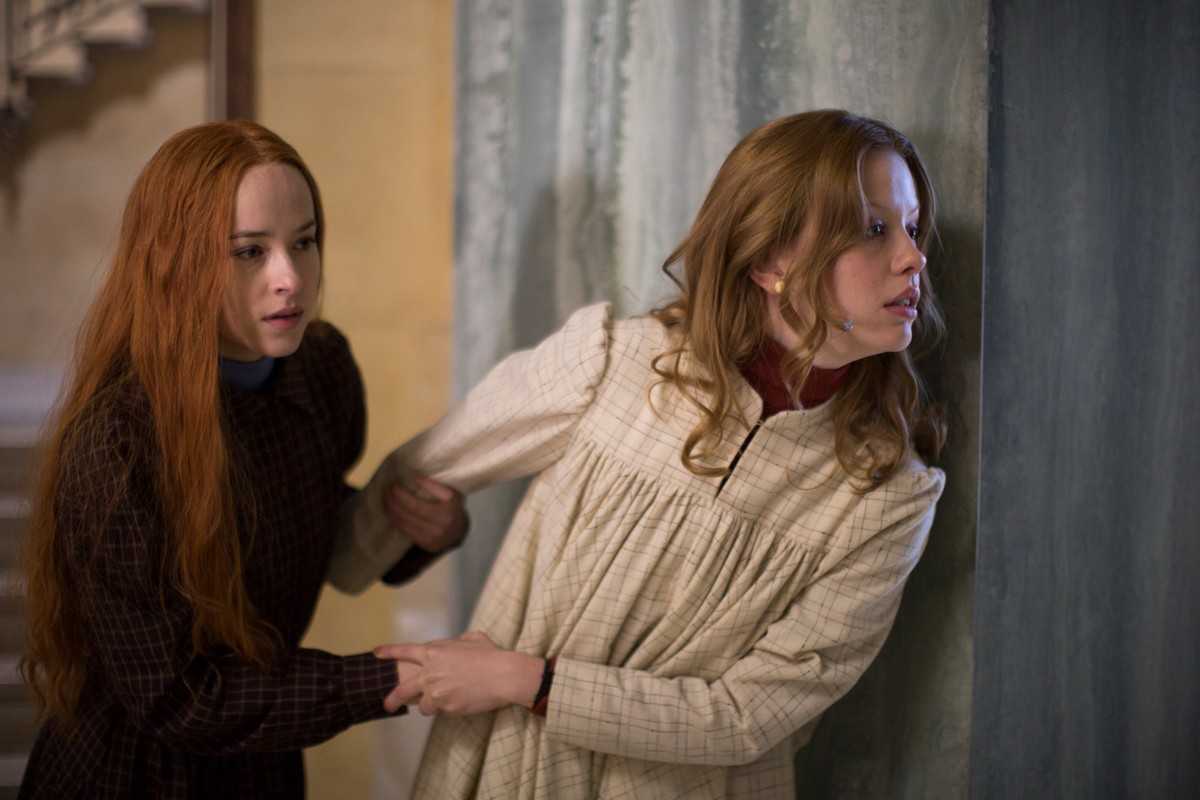
As it turns out, “Volk,” the dance the troupe has been rehearsing, is much more than a complex and beautiful performance piece. It’s a ritual that will cast Susie’s soul out of her body and replace it with that of Mother Markos, who is literally rotting under the floorboards of the studio. All Susie has to do is lead the troupe through the moves as choreographed, and Mama Markos is good to go. But Susie has other ideas. She argues against some of Blanc’s moves, arguing that she should stay grounded, closer to the floor instead of leaping into the air as early on in the performance as Blanc has staged it. Won’t it make the leaps more effective if they come later in the piece? she asks, leading Blanc to criticize her lack of understanding about the conditions under which the piece was originally created. It was written at a time when Germany wanted women to submit to their men, shut their mouths, create good German babies, and support the war. Leaving the earthly plane of an oppressive reality and leaping into the ether was a necessity back then, for women, to survive. We need to get you into the air, Blanc says, but Susie’s not convinced. The war is over, and the company is living in the past. Susie’s pushback against Blanc’s signature piece reveals another division within the company: those who are still stuck in the past, and those who want to move forward. Susie doesn’t feel the need to escape from the world or leap into some other, ethereal realm; she wants to stay grounded in the world as is.

Blanc, of course, also represents this division as the person who challenges Markos’s authority, as are those who vote for her over the decrepit MM (which is its own representation of a past that has hung around too long). But the strength of these women – or witches, let’s just say it – falters as soon as their challenge is defeated. They’re too loyal, too connected to the history of the coven to break free of it and forge a new direction. There are hints of it, such as when Blanc starts choreographing a new piece for the company, but even then, she allows Susie to improvise her part rather than directing her movements. It’s possible the company cannot move forward without Susie, that Blanc needs her to help guide them in a new direction, but as the audience knows, the presence of Markos makes this impossible. As long as she is in the picture, Susie’s doomed, and the company appears destined to stay stuck in the past.

Cut to the day of the “Volk” performance. Susie preps with a seriousness and calm which indicates she knows something’s at stake, but how much she knows is still a mystery. It’s hard to believe she would actually be okay with having her soul cast out of her body, but it’s clear her instincts are elsewhere, and she’s too opaque to decipher at this point. Unfortunately, Sarah has decided to take advantage of the company’s distraction with the show to go back into the depths of the building and try to find Patricia, whom she is convinced is being held captive somewhere down below. When it’s time for the show to go on, Sarah is nowhere to be found – something Susie definitely makes note of – but go on the show must, and the dancers take the stage without her.

Sarah probably would have been better off sticking with the performance, though – she finds Patricia all right, but she’s zombified in some state of undead, suspended animation. She tells Sarah that Mama Markos visits her every night, feeding off of her energy (and quite possibly her body; it’s unclear), and soon other bodies in various states of decomposition and mutilation start to crawl out of the shadows, calling Sarah’s name, begging for help. It’s pretty awful.

Sarah really struggled at first to believe that such a warm, loving place that has always felt like family to her could really be this horrid under the surface. It’s a struggle I experience when watching the movie, too. There’s no doubt that Blanc is a loving presence who cares for the girls (to a point, at least) and that the dancers themselves are a tight unit. The way they welcome Susie with open arms reinforces the impression of the company as a safe, supportive space for women, just as one of the matrons tells Susie once she’s accepted. It’s this warmth and welcoming that makes what’s later revealed feel like such a deep, disappointing betrayal; on the surface, this appears to be the perfect nurturing environment for these talented young women, and many of the matrons themselves are conflicted by their desire to provide that for them, but they’re unwilling to challenge the power structure that has protected them for so long, and ultimately they all choose their own security over that of the girls in their charge. It’s…the wrong decision.
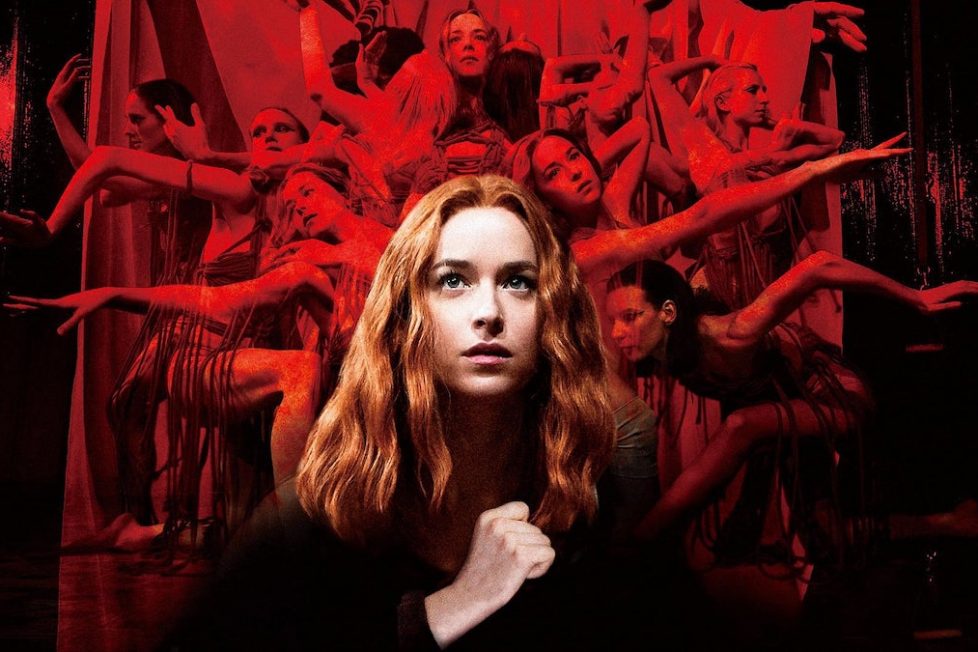
Take Sarah, for example. She is kind, and caring, and she loves the dance company like her own family. But her foray into the bowels of the building crosses a line, and she must be punished. It’s significant that Blanc is the one to mete out the punishment here – as Markos’s former challenger, she’s the one most likely to protect Sarah over the coven’s secrets. But she does not. Even Blanc bows to the perceived power of old MM in the end, and she orchestrates the same sort of grisly fate for Sarah that the other undead bodies in the basement have endured. So long, Sarah. We barely knew ya.

But not before they send her zombified body back to the dance floor to complete the ritual. Every dancer must be present and perform their part if the ritual is going to work, and once Sarah returns it’s Susie’s turn to recognize that something is not right. What she knows is unclear – but everyone can see that Sarah’s not okay. Susie throws the performance off by improvising instead of sticking to the steps, which breaks the spell, and Sarah suddenly falls to the floor, screaming in pain. The matrons rush forward to carry her off (So long, Sarah. We barely knew ya) and bring up the lights. Ritual interrupted. Performance over.
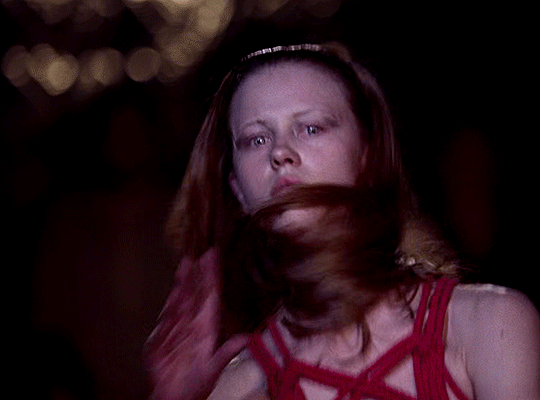
Blanc tries to chastise Susie for breaking the spell, but what she really wants to do is prepare her for what’s coming. She wants to tell her everything, but she feels like it would be wrong. Susie comforts her, tells her she knows Blanc loves her, but the conversation ends on an ominous note: Why is everyone so quick to assume that the worst is over? Susie posits to Mme Blanc. It’s unclear who she’s talking about, unclear which one of them is making this incorrect assumption, but Susie’s not yet confident enough to express her own thoughts without looking to Blanc for validation. It’s all a mess, isn’t it? she asks Blanc. The world out there, the world in here. She’s right, of course, but Blanc is unwilling to spill the dancing beans. The most she can do is ensure Susie a night of sleep unbroken by disturbing dreams.

So OK, things are about to go off the rails, and keep in mind there’s a lot I’m not digging into here. I’ve barely mentioned the plight of Dr. Klemperer – and honestly did anybody miss him? – but he’s been searching for Patricia ever since her disappearance, to the point of contacting the police. The witches know he’s the one who’s tipped off the cops, and even though they pose no threat as the matrons simply cast a spell on them and send them away, they decide to up the stakes of the next ritual by including “a witness.” They have an idea that this will help seal the deal and make for a smooth transition from Markos to Susie – as if punishing the outside world for intruding will help. It won’t.

Turns out the girls are going to have to perform “Volk” again, and soon, because Mama M can’t wait much longer for a new body. The old one is looking ROUGH, y’all. So, the witches enchant the dancers at night, bringing them into the secret chambers of their coven where they will perform again while under their spell. The lack of a costume isn’t the only thing different about this performance; it’s decidedly more wild and animalistic in nature, and it indicates the level of desperation Markos has sunk to at this point. She needs this shit to go down, pronto.
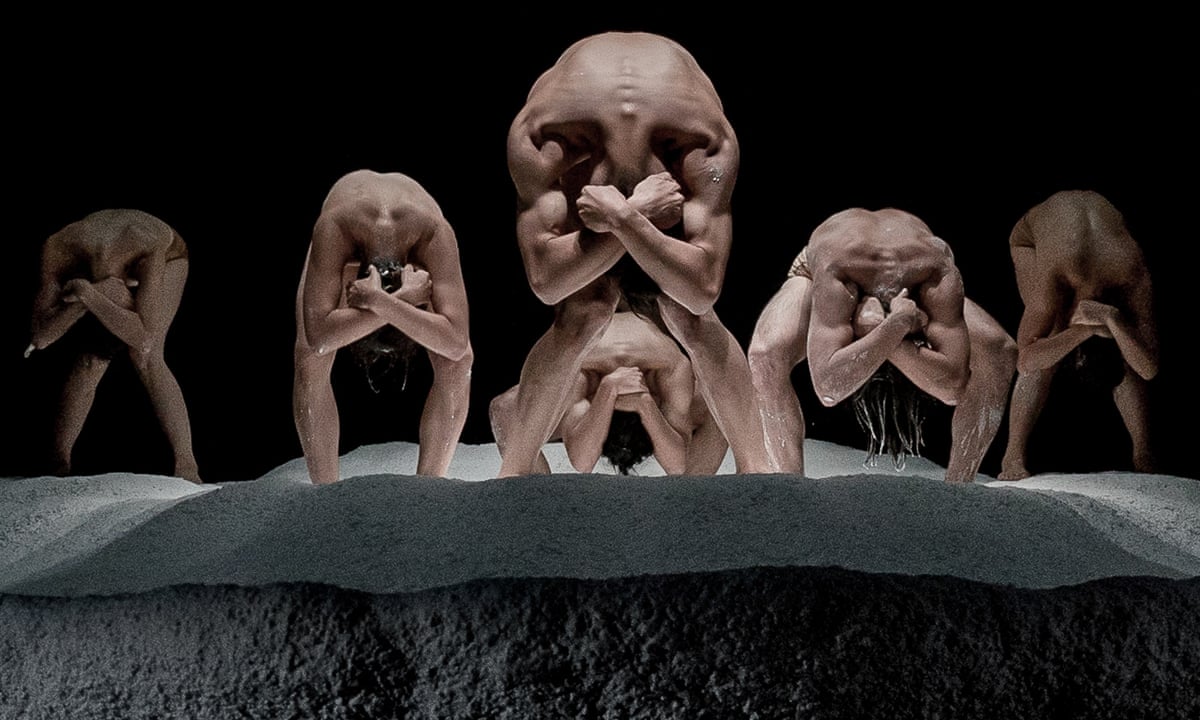
One dancer has not been summoned though: Susie is still upstairs in her room. She dresses for the ceremony with intention and makes her way down the stairs into the chamber on her own – again, it’s as if she knows what’s coming, and she’s okay with it. Once she enters the chamber, though, the color palette of the film makes an immediate shift: everything, and everyone, is now bathed in a deep red the color of blood, and it will stay that way for the duration of the ceremony. I think it’s a nod to the garish colors of the original since elsewhere the film remains awash in muted, earthy tones.

Blanc is there, also swathed in red, and Mama Markos looks like the world’s biggest molehill with eyes. Blanc stops Susie as she enters the room, and implores Markos to wait. Something’s wrong, she says to MM, can’t you feel it? But at this point, Markos can’t feel anything except her own bones disintegrating, because faster than you can say “Volk” she’s hit Blanc with some kind of magic that almost decapitates her. Blood spurts everywhere. Consider that a preview, because something’s going on with Susie while Blanc’s being relieved of her head.

She’s standing at the top of the stairs, breathing heavily but peacefully. Actually, she’s not just breathing – she’s sighing. Slowly, in an extended moment of utter weirdness, she reaches down and digs into her own chest, prying it open to reveal – a mouth? A vagina? It’s unclear to me what it is, but it ain’t normal, and it seems clear that Susie is the real Mother of Sighs reborn, which portends dark things for the fake Mama who’s sitting in the corner. Sure enough, a literal manifestation of death emerges from some even deeper space within the chamber, like some grisly familiar of Susie’s, and proceeds to blow the heads off every matron who supported Markos instead of Blanc. Unfortunately, Blanc’s head is hanging on like the tip of a Pez dispenser at this point, so she’s far from spared.

Still bathed in red light, along with a LOT of blood, Susie makes her way down into the chamber where all the enchanted girls are still dancing feverishly. Sarah, Patricia, and the other sacrificed girls have been brought into the room, and Susie approaches each one, asking them what they want from her. One by one they all ask to die, which, I get it, but since she’s asking, why not ask to be brought back to life with an undamaged body? I guess that’s not an option, and Susie asking them what they want is just a formality. She takes particular care with Sarah, embracing her gently as she releases her to death. Susie then instructs the rest of the girls to keep dancing, as she finds them beautiful. It would appear that, as Mother Suspiriorum, Susie may just be a different kind of witch.
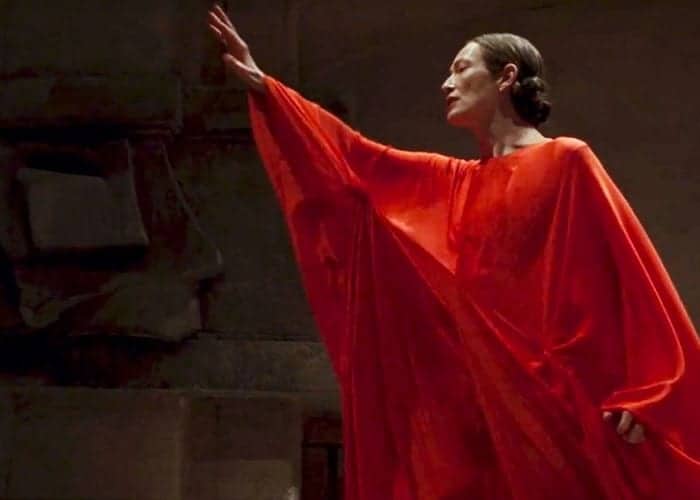
With the phony Mother disposed of, as well as her supporters, there’s not much more for Susie/MotherSuspiriorum to do but clean up – literally and figuratively. She leaves the actual cleanup of the disastrously bloody chamber to the matrons who were spared – Susie may have allowed them to live, but she hasn’t completely forgiven them their transgressions, either. After all, they all played a part in the deaths of Patricia, Olga, and Sarah, as well as who even knows how many others, so they’re not out of the cauldron yet. In fact, as they clean up the muck, one of them discovers that Mme Blanc, while almost completely decapitated, is still alive – just like the other dancers were after rituals that went awry. I guess it’s Blanc’s turn to rot away in the basement in a state of mutilation, while Susie does what with her, exactly? Who knows. It would seem she’s kept her in this state for a reason, but it’s also possible it’s some punishment exacted on her by Markos’s magic that can’t be undone.

The dancers, for their part, have no recollection of what happened the night before, so imagine their shock when they are told that Mme Blanc has left the company. One of the surviving matrons tells them this, not Susie, and it’s unclear how the troupe will function moving forward. There’s no doubt that losing Blanc is a huge loss, as she was the heart of the company, but we’ve already heard Susie say she wants to be the company’s hands, so my guess is she will guide them well. And as we’ve already seen, there’s a good chance she won’t be making the same mistakes – indeed, since she is the real Mother of Sighs, there will be no need for more dancer sacrifice. So alls well that ends well, I guess.

There’s also Klemperer to deal with – the psychiatrist who was forced to be a “witness” to all that madness in the blood-red chamber. He’s had one hell of a shock as you can imagine, so the final scene shows Susie, now fully grown into her role as Mother, visiting him at his home. She apologizes for what he was forced to watch – she was not yet in a position to control what happened in the coven, and she could not prevent it. As a sort of backhanded gift to him, she waves her hand over his eyes and erases not just all memory of that horrible night, but his memory of all the women he’s ever known, including his long-dead wife whose disappearance during the war he still mourns. We need guilt, doctor, she tells him, and shame. But not yours. Susie’s right about the dance company – a little guilt and shame would have prevented the coven from sacrificing their dancers and being misled by a phony Mother, lessons it appears Susie has learned and intends to correct. But the company is still an insular world by necessity, so Klemperer’s memories of it have got to go. And while she’s at it, Susie removes his memories of his lost wife too – dude’s been through a lot between losing his wife, searching for Patricia, and then watching a witchy ritual gone bloodily awry, so Susie clears the slate and moves on. Like everything else, there are two sides to this action – sure, he no longer will suffer painful memories from his past, but he won’t recall the good ones, either. There’s always a price, after all, and Susie will still have to make hard choices to keep the coven alive, but as long as she stays grounded (as she wanted to do with “Volk”) there’s hope that she can lead without causing too much damage.

But wait – as if there wasn’t enough packed into the movie’s three-hour runtime, we get a post-credits snippet showing Susie outside, in the bitter cold of a dark night. All we see is a tight shot of her face as she reaches out with one hand to do – something we don’t see. She reveals the slightest hint of a sly smile, before glancing to her right, looking back at whatever she’s just touched again, and then walking away. There’s no clear explanation out there as to what this means, but I like to think it’s Susie locking the doors of the dance company building one final time. With Blanc gone, and Susie’s desire to move the company forward, it would make sense for them to move elsewhere and start afresh. That may be more hopeful than other interpretations, but personally I like to think that the superficial warmth and kindness of the coven’s previous existence could be manifested in a more honest and real way. It also hints at sequels, something the director discussed when the film came out, but not having heard anything about that since 2018 doesn’t bode well, so for now my interpretation will have to do. Or come up with your own – after all, I’m not your Mother.


Fabulous rendition!
Thanks as always! 😊